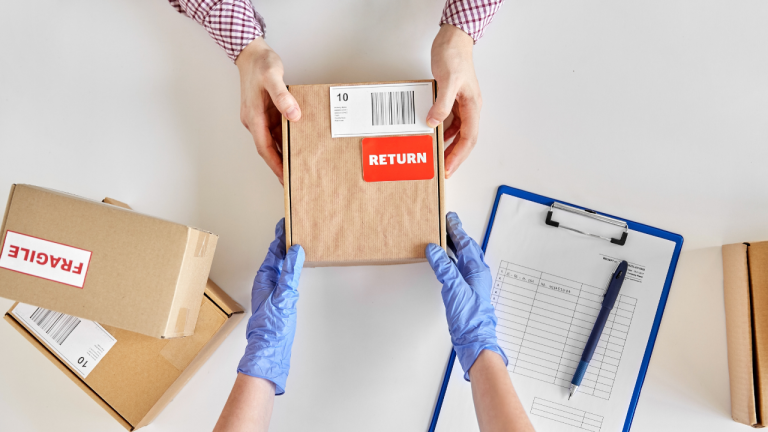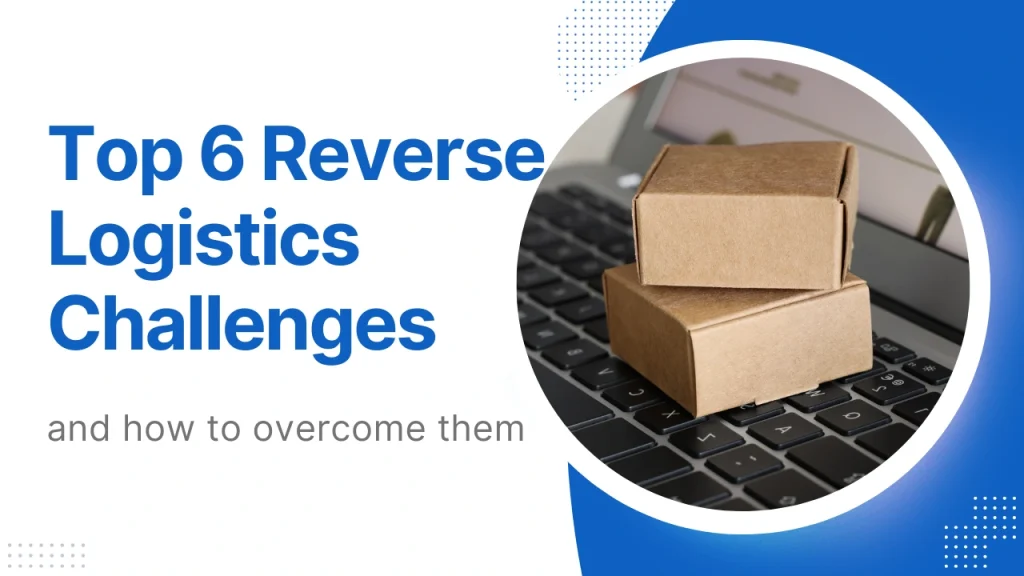Reverse logistics, the process of managing product returns and refurbishments, has become an essential part of e-commerce and retail operations. As consumer returns surge, particularly during high-demand periods like the holiday season, businesses face significant challenges in handling returns efficiently. In 2023, the U.S. retail industry alone saw an estimated $173 billion worth of returned goods, roughly 18% of total holiday sales. Managing these returns effectively is crucial not only for controlling costs but also for maintaining sustainability and customer satisfaction. Here’s a look at the top challenges in reverse logistics and strategies to overcome them.
1. High Cost of Returns Management

The cost of processing returns can be staggering, particularly for e-commerce companies. Estimates show that processing returns can cost 50% to 65% of the original price of the product. This is due to the various steps involved, such as transportation, restocking, repackaging, and sometimes even disposal. Businesses also face the challenge of determining what to do with the returned products—whether to resell, refurbish, or recycle them.
Solution: To reduce these costs, retailers are increasingly leveraging technology, such as inventory management and analytics software. By understanding why products are being returned, companies can address those root causes and reduce future returns. Many businesses also negotiate return policies with suppliers to recover some costs from damaged or defective items. Furthermore, partnering with third-party logistics providers can help streamline the returns process and reduce operational expenses.
2. Inefficient Processing and Handling

Managing returned products involves complex steps, from inspecting the item’s condition to determining whether it can be resold, refurbished, or recycled. A poorly organized reverse logistics process can lead to delays, inventory buildup, and lost sales opportunities. According to a recent survey, 42% of businesses identified slow return processing as a significant challenge, resulting in wasted time and resources.
Solution: Automation is key to overcoming inefficiencies. Utilizing software that tracks returns from the moment they are initiated can help speed up processing times. Barcode scanners, AI-powered inspection tools, and warehouse management systems can also improve the speed and accuracy of handling returned goods. Automation can reduce processing time by 50%, helping businesses save money and get products back into circulation faster.
3. Return Fraud

Return fraud is a growing problem, costing U.S. retailers an estimated $78 billion annually. Fraudulent returns, such as returning used or stolen goods, significantly inflate costs and create inventory management challenges.
Solution: Implementing stricter return policies is a key strategy to combat fraud. For example, requiring proof of purchase and limiting return time frames can reduce fraudulent returns. Some companies are also turning to AI-powered tools that can detect patterns of fraudulent behavior. Another method is to offer different return options, such as incentivizing in-store returns, where fraud is easier to detect.
4. Environmental Impact

The rise in e-commerce has led to more returns, and with that, a growing environmental footprint. Each return adds to carbon emissions, and unsellable returns often end up in landfills. In fact, it’s estimated that 5 billion pounds of returned goods end up in landfills annually in the U.S.
Solution: Sustainable reverse logistics practices are becoming more prevalent. Retailers are increasingly refurbishing, recycling, or donating returned items. Partnering with local recycling initiatives or charities can help reduce environmental impact while also promoting a positive brand image. Some retailers are even marketing refurbished products as a sustainable option, attracting environmentally conscious consumers.
5. Lack of Visibility and Data

One of the key challenges in reverse logistics is the lack of visibility into the returns process. Many companies struggle to track returned items, leading to inefficiencies and delays. Without clear data, it’s difficult to understand the reasons behind returns and implement improvements.
Solution: Investing in advanced tracking systems and data analytics can provide greater visibility into the returns process. By capturing data on return reasons and product conditions, retailers can make informed decisions about improving product quality and reducing return rates. This data also helps companies triage returned items more effectively, determining whether they should be resold, refurbished, or recycled.
6. Consumer Expectations for Free and Easy Returns

Today’s consumers expect free and hassle-free returns. However, offering free returns can significantly impact a retailer’s bottom line. For instance, the cost of providing free returns, especially in e-commerce, can lead to thinner profit margins or even losses.
Solution: Retailers can offer tiered return policies that incentivize cost-effective behavior. For example, offering free returns to loyalty program members or charging for less preferred return methods, such as mail-in returns, while offering in-store returns for free. Additionally, clear communication about return policies at the point of purchase can help set realistic expectations and reduce unnecessary returns.
Final Thoughts
The rise in returns, particularly with the growth of e-commerce, presents major challenges for businesses. However, by adopting strategic measures—such as utilizing technology, promoting sustainability, and refining return policies—retailers can mitigate the high costs and environmental impact of reverse logistics. As we move forward into 2025, these efforts will be key in ensuring that companies can manage returns efficiently while meeting both financial and sustainability goals.


